 At a glance
At a glanceExpert's Rating
Pros
- Fantastic 4K captures front and rear, day and night
- Crisp display and efficient phone app
- Integrated GPS
- Affordable for the quality of its captures
Cons
- Rear camera isn’t detachable from its sticky mount
Our Verdict
If you want the best captures — front and rear, day and night — then look no further than Miofive’s surprisingly affordable S1 Ultra. If only the app didn’t insist on you providing your phone number.
Best Prices Today: Miofive S1 Ultra Dash Cam
I’ve reviewed a number of 4K dash cams, but Miofive’s S1 Ultra is the first I’ve tested that supports 4K rear captures. However, 4K means squat without quality optics and processing.
Apparently Miofive understands that only too well — the S1’s captures are absolutely outstanding: front and rear, day or night. They don’t cost you an arm and a leg either. My only complaint is that the app is intrusive, though it’s not necessary to use the dash cam.
Further reading: See our roundup of the best dash cams to learn about competing products.
What are the Miofive S1 Ultra’s features?
The S1 Ultra is a dual-channel, front/rear dash cam system featuring 2160p video from both cameras, though the rear camera defaults to 1440p. The front camera’s field of view is 140 degrees and the rear camera’s FOV is 115 degrees.

Outwardly, the S1 Ultra is rather unimpressive. It’s your standard black rectangle (around 3.5-inches wide, 1.5-inches deep, and 2-inches tall) with a 2.5-inch, 480p display and buttons alongside the display to navigate the menu system.
Miofive was mum on the sensors it uses, but whatever brand they are, they and whatever processing is involved, produce excellent results. GPS is integrated as are both Bluetooth and Wi-Fi for phone connectivity. There’s of course an app.
The app makes it appear as if you need to log on to a Miofive account, which requires you to enter a phone number. You do not have to participate if you do not wish. The app will still connect to the camera. Listening 70Mai?
There’s also a TF card slot (class 10 is recommended), as well as ports for the power and rear camera. What is impressive is the 5 ounce heft, which gives the unit a more substantial feel than many. Put simply, it doesn’t feel cheap.
The front camera is easily removable from its semi-permanent adhesive base and draws power via an auxiliary adapter using a Type-A to Type-C (on the camera end) cable. A long mini-8-pin to mini-8-pin cable connects to the rear camera, which also mounts using semi-permanent adhesive, but isn’t removable. Regardless, it withstood being squashed with the top down on my convertible for a long drive to California’s Central Valley.
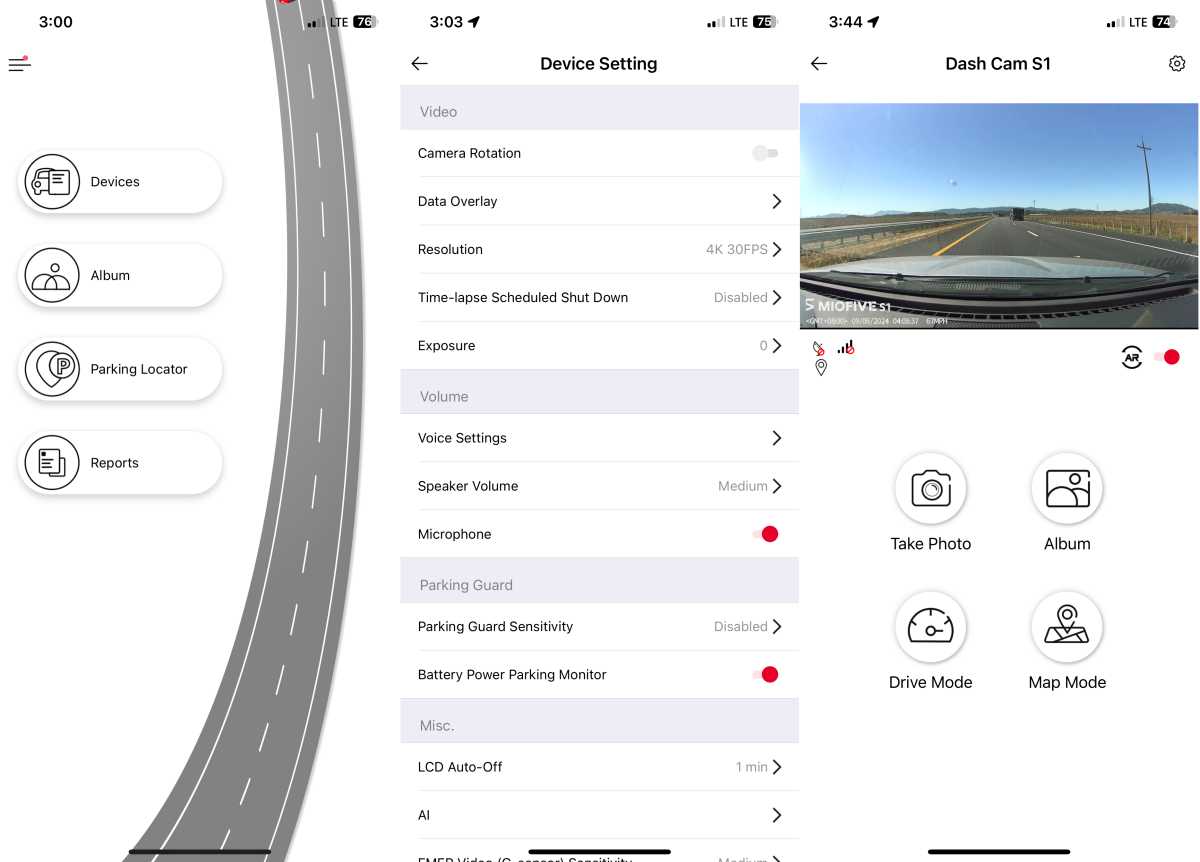
The S1 Ultra uses a supercapacitor rather than a battery, but it’s a rather hefty one. It runs the camera for 2 to 3 seconds after losing power. Long enough for the digital lady to tell you that constant power has been disconnected. She also informs you that “Miofive is here for you” at power up, and will scold or warn about various things (bad driver alerts — though thankfully, not collision or lane departure).
How much does the Miofive S1 Ultra cost?
At the time of this writing, the S1 Ultra was selling for just under $200. That’s not dirt cheap, but considering the quality of its captures, money well spent. Front/rear dash cam systems start at around $120, but I’ve yet to see anything approaching that cheap with the capture quality of the S1 Ultra. Even the mighty Cobra SC 400D can’t match that.
Miofive warranties the S1 Ultra for 18 months, which is a long time by dash cam industry standards. Remember that dash cams are perpetually exposed to direct sunlight, which creates a lot of heat, which is the bane of all electronics.
How are the Miofive S1 Ultra’s captures?
I already let the cat out of the bag on this one. The captures are most excellent, so much so that I’m not surprised that Miofive doesn’t want to discuss the components involved. The color is accurate, exposure seems right on no matter the lighting conditions, headlight flare is handled very well, and the detail is absolutely outstanding. There were no motion defects to speak of either.
Most unusually, the night captures are on par with the day captures. Nearly all the dash cams I’ve tested work well during the day, but very few shine at night, so to speak.
By default the S1 Ultra is set to 2160p in the front, but only 1440p in the rear. My policy is to use the default setting. You can up the resolution in the back if you wish, but I don’t really see the need given the already high-quality of the captures. Also, 2160p uses approximately 230MBps (h.265) while 1440p uses only 130MBps. The S1 Ultra will accept up to 512GB cards — I suggest you get the largest you can afford.
Note that the Miofive S1 Ultra didn’t set the time correctly via GPS (it was Eastern Time) though the settings seemed to indicate it would. I forgot to set it myself, which is why the times shown in the following images are all off. Subtract three hours (and a day if necessary) for the true date/time and lighting conditions.
The front day capture shown below is crisp, detailed, and sports accurate color. Note that the license plates are readable even to the side at a severe angle. Sweet.
The color is accurate, exposure seems right on no matter the lighting conditions, headlight flare is handled very well, and the detail is absolutely outstanding.
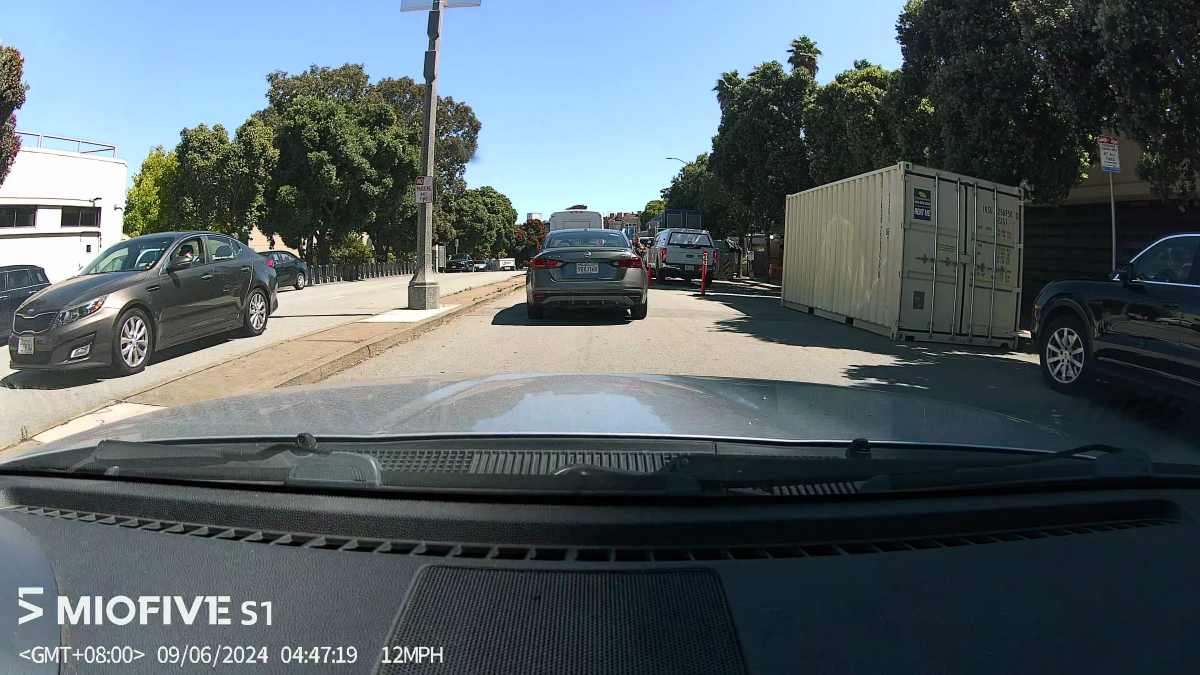
The front night capture shown below has an extraordinary amount of detail given the low light condition. Headlight flare is also handled fantastically
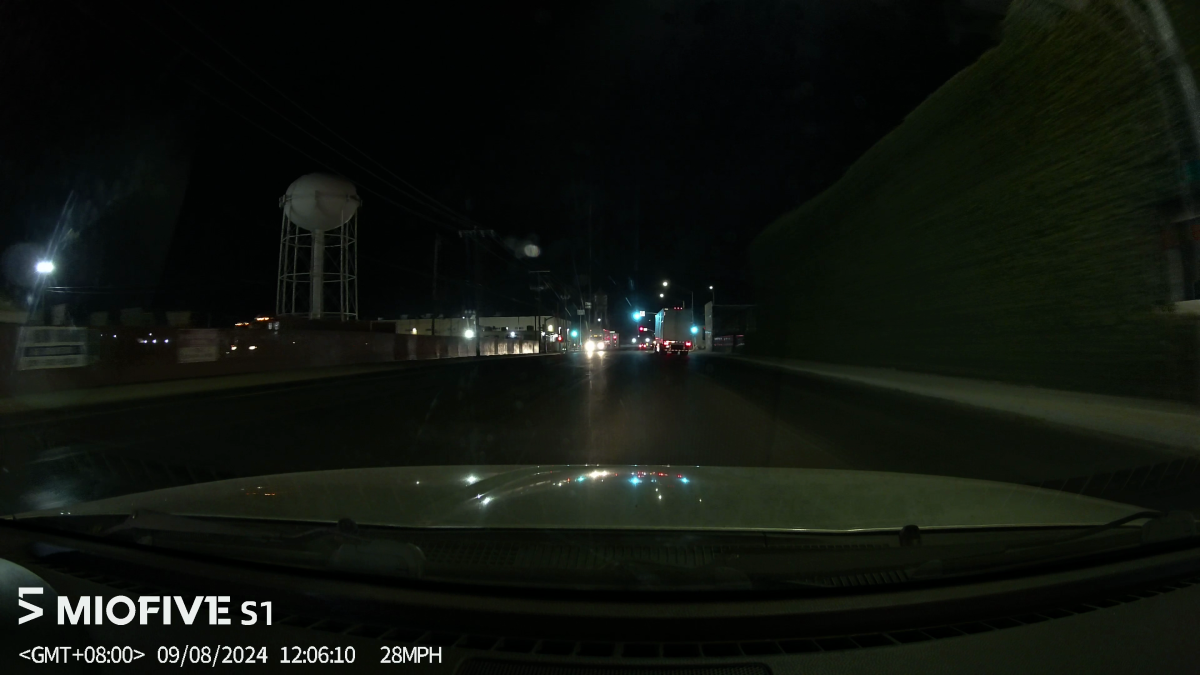
While only 1440p, this rear day capture shows a great amount of detail. You can increase it even further (with more storage used) by selecting 2160p.
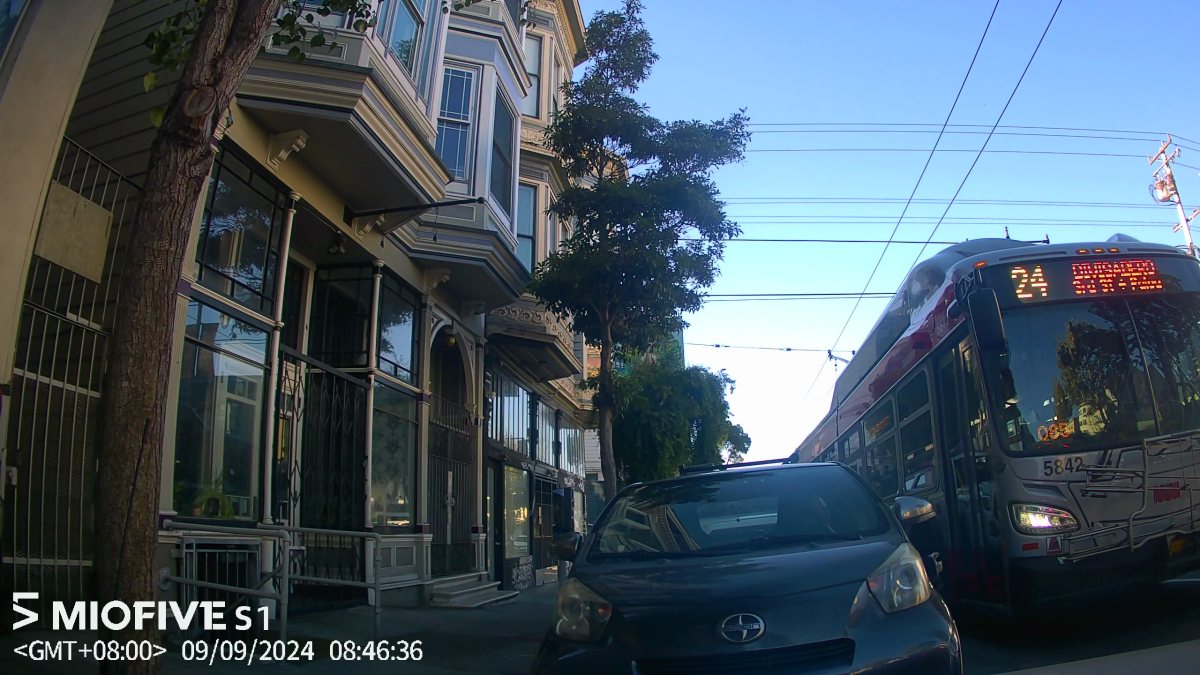
You can still easily read the numbers on the license plate of the truck in this rear night capture. This, kids, is real-deal rear capture.

Because I didn’t want to leave you hanging on the rear 4K, here’s the rear view at that resolution. There’s more detail, but it’s not light years better than the 1440p.
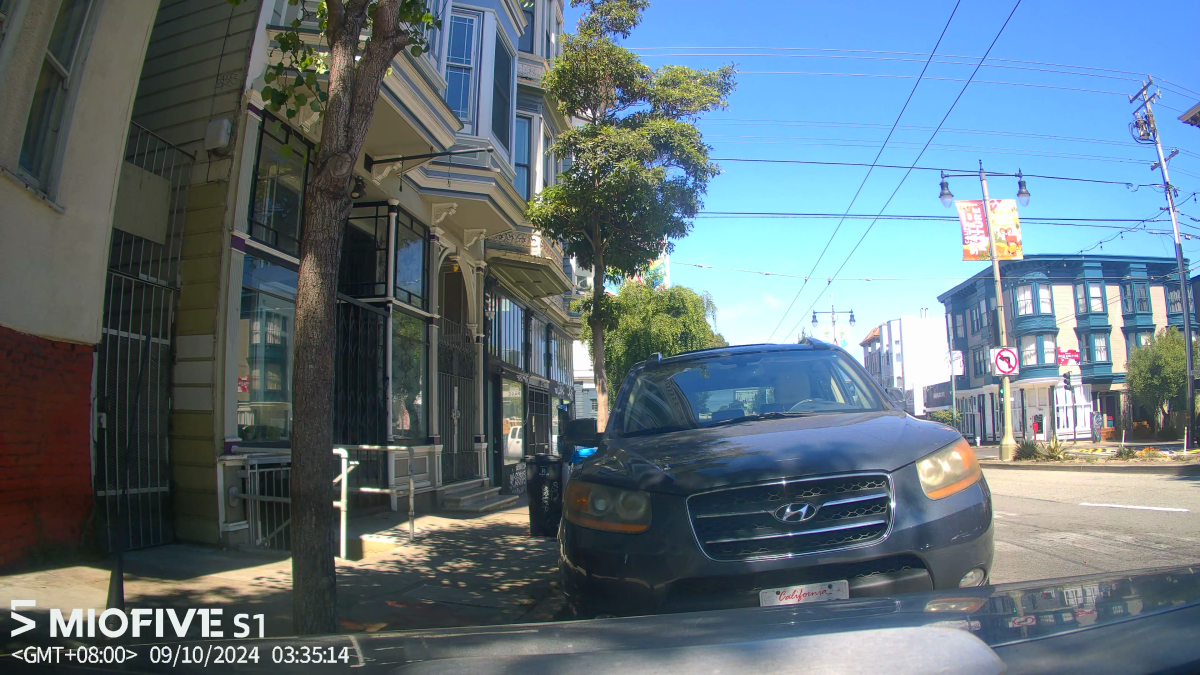
The S1 Ultra ran a bit warm to the touch. Enough that Miofive might want to add more ventilation louvers to any upcoming revisions. As to the aforementioned supercapacitor, Miofive claims a 2-second run time, but I saw quite a bit more than that, perhaps 5 seconds, on those occasions I was using the app and the unit wasn’t recording.
I can’t remember the last time I had no complaints whatsoever about a dash cam’s captures. That might actually be never. Excellent job by the Miofive designer guys and gals.
Should you buy the Miofive S1 Ultra?
If you want the best captures possible, then Miofive’s S1 Ultra should be on a short list. A short list with only one item on it. Kudos to Miofive for raising the capture-quality bar and doing so for a very reasonable price.




